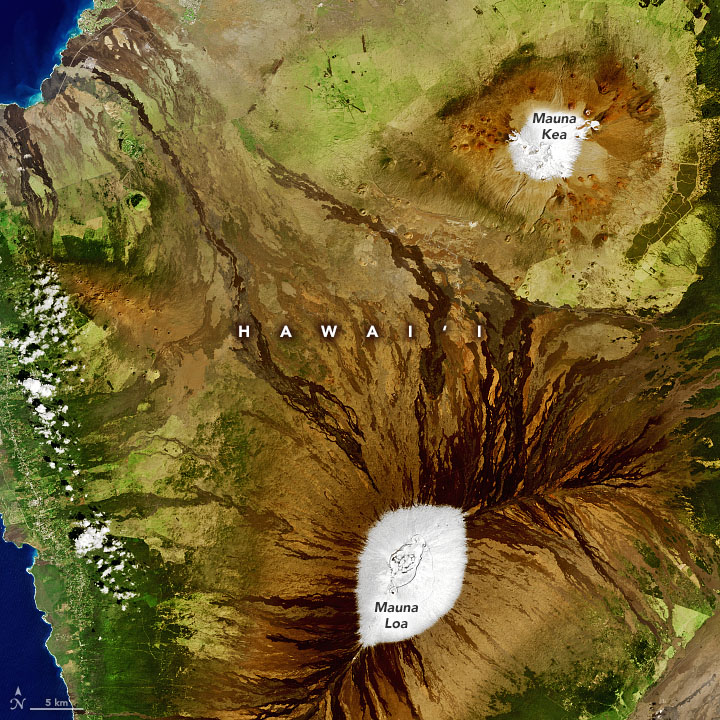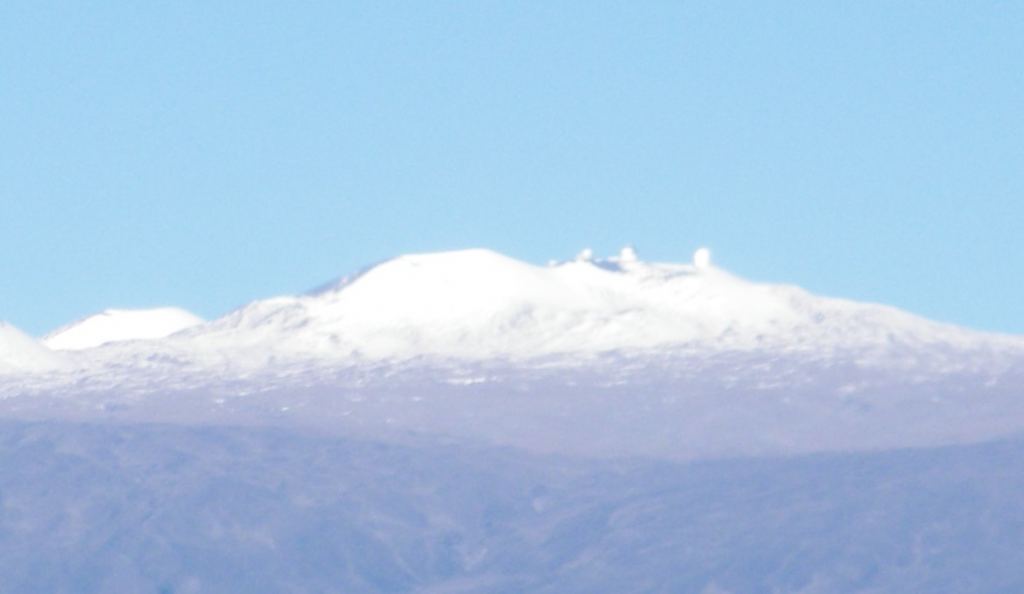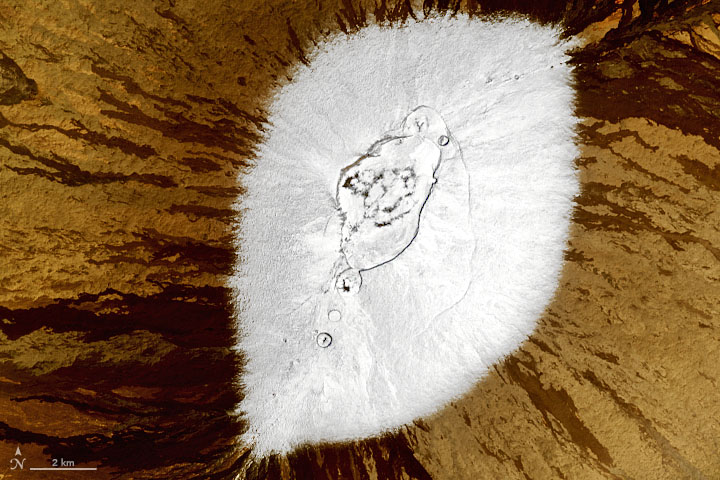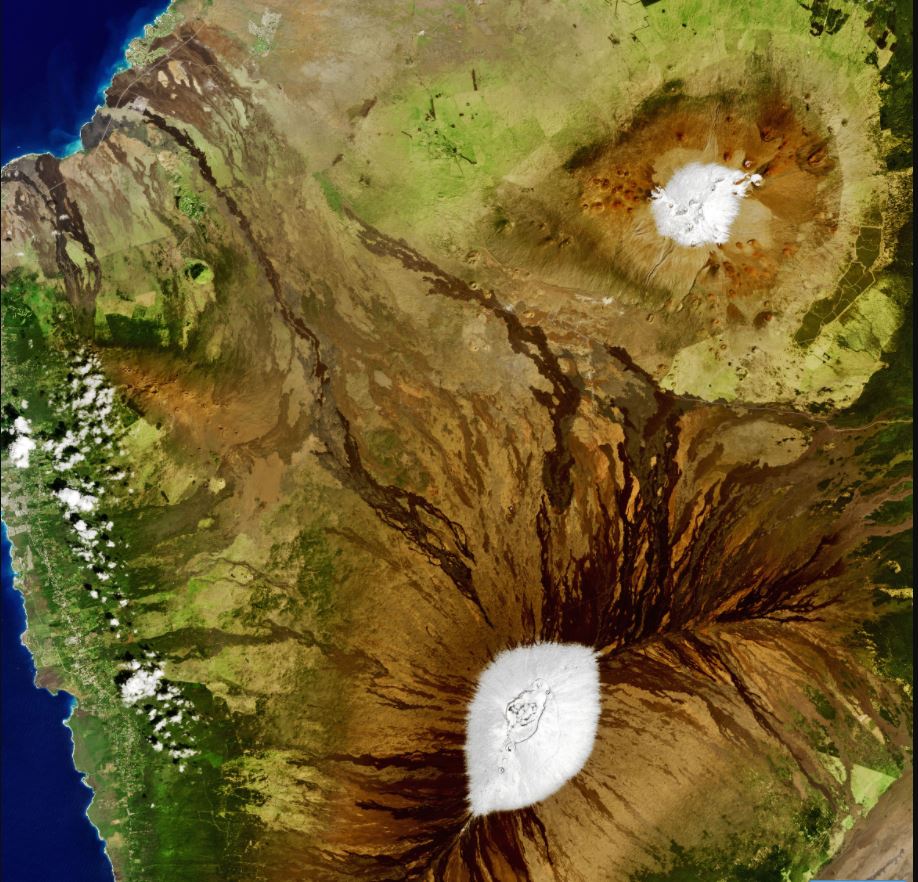The words “snow” and “Hawai’i” are not often mentioned in the same paragraph – or even on the same vacation. But snow does fall in Hawai’i almost every year, and 2021 has seen a deep cold front drop snow on the summits of Mauna Loa and Mauna Kea on the Big Island at least three times in the past few weeks – as well as on Haleakala on Maui. This means there are currently in snowcaps on Hawai’i’s three tallest mountains.
In this image from February 6, 2021, the Operational Land Imager (OLI) on Landsat 8 acquired natural-color images of the Big Island showing abundant snow on the two peaks. Nearly every year, Mauna Kea and Mauna Loa — with elevations at about 13,600 feet/4,200 meters receive at least a dusting that lasts a few days. But this year, the snow has been more like a winter blanket of snow.

And as for snowfall in Hawai’i impacting vacation plans, well, it happened to me.
Ten years ago during a trip to the Big Island, I had a tour lined up to go to the summit of Mauna Kea to see the major telescopes located there. But while I was enjoying a sunny day on one of the black sand beaches, I received a phone call that the tour to the summit had to be canceled because a snowstorm had dumped close to a foot of snow at the peak of Mauna Kea, and the roads would not be cleared in time for my tour. As you might imagine, it was a major disappointment.
But with the Big Island’s variety of climate zones – at least 8 by some counts – there is always a variety of things to do. I had to settle for a helicopter tour where I saw the telescopes from a distance.

This year, the road to the summit of Mauna Kea was closed again last week, and a high winds blasted at 45 to 75 miles per hour.
NASA’s Earth Observatory website said that snowfall in Hawai’i is often associated with a weather phenomenon referred to as a Kona low. Winds that typically blow out of the northeast shift and blow from the southwest. The winds from the leeward or “Kona” side draw moisture from the tropical Pacific, turning it from rain to snow as the air rises up into the high elevations.

According to news reports, Hawaiians have found their way up the volcanic mountains with snowboards and boogie boards to take advantage of the snow. Others have filled their pickup truck beds to bring some of the white stuff down to friends.
You can see the latest webcam image from the summit of Mauna Kea here.

